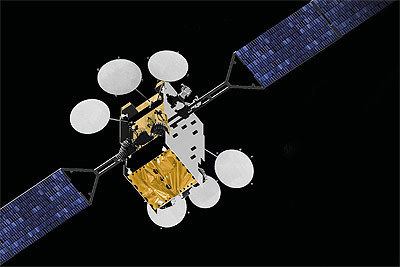Mission duration 15 years Launch mass 6,000 kg (13,000 lb) Reference system Geocentric Launch date 2020 | Spacecraft SES-17 Power 15 kW Regime Geostationary Operator SES S.A. | |
 | ||
Similar Spacebus, Ocean Surface Topograp, AMC‑21, Hispasat AG1, Zhongxing 12 | ||
SES-17, is a high throughput geostationary communications satellite to be operated by SES and to be designed and manufactured by Thales Alenia Space on the all electric Spacebus Neo platform. It will weight more than 6 t (6.6 tons), generate over 15 kW of power and have a design life of at least 15 years.
Contents
It will have around 200 Ka band band spot-beams to offer coverage over North America, South America, the Caribbean, Mexico, and the Atlantic Ocean mainly for aircraft connectivity. It will be SES's first pure Ka band satellite in the geostationary orbit and is expected to be launched in 2020.
Satellite description
SES-17 is based on the three axis stabilized Spacebus Neo satellite bus. It will mass around 6 t (6.6 tons), produce 15 kW of power and have a design life of 15 years.
As all Spacebus Neo, it will use electric propulsion exclusively for both orbit raising and station keeping.
Its payload is composed of 200 Ku band transponders arranged spot-beams. This high throughput satellite's beams will cover North America, South America, the Caribbean, Mexico, and the Atlantic Ocean for the aviation connectivity market.
History
On September 12, 2016, SES S.A. ordered its first Ka band high throughput satellite, SES-17, from Thales Alenia Space. It was to be built on the Spacebus Neo platform, weight 6 t (6.6 tons), produce 15 kW of power and have a design life of 15 years. It would offer aviation connectivity services over North America, South America, the Caribbean, Mexico, and the Atlantic Ocean and was expected to launch in 2020. Its anchor customer was going to be FlytLIVE by Thales, which would be operation since 2017 thanks to the use of other SES satellites on orbit. The project cost was expected to be around 500 Million dollars.
